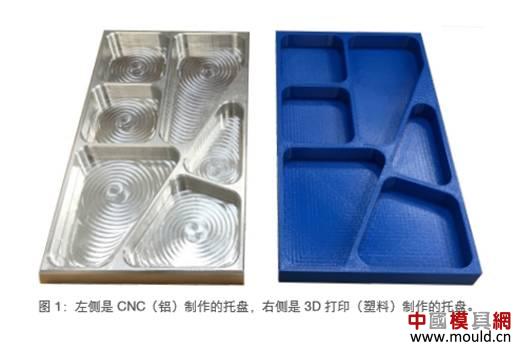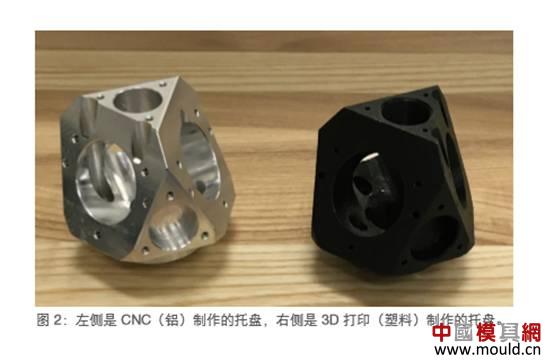
When manufacturing prototypes to support product development, 3D printing and CNC (computer numerical control) milling machines are two kinds of prototyping processes that need to be considered. Then when the specific application, especially when the design and product specifications have not yet been knocked out, how to What are the choices in these two processes? Combined with specific cases, we can understand the characteristics of the two processes.
First, the advantages of 3D printing process:
1, without the use of molds, can create complex geometries without affecting time or cost. It allows users to quickly deliver small batches of parts and can flexibly and agilely adapt to design changes.
2. Support parallel parts processing and save time. Users can produce multiple parts in a single project, produce multiple versions of a single part, or produce multiple parts for different projects.
3, do not need to use a variety of settings to manufacture parts, without operator supervision or intervention. After starting work, the equipment will run until the part is completed.
Second, an illustration of time and cost
The following example uses a labor cost rate of $37.00 per hour. For hourly machine time costs, these examples use a $1.00 value* for both 3D printing and CNC. For material costs based on extended volume calculations, 3D printing uses $1.00/in3 while the CNC uses $0.50/in3**. (Taking portable trays and industrial robot adapters as an example)

Third, quality characteristics
1, materials. The 3D printing process as a whole can handle a wide range of material categories, but each technology can only handle one type of material, covering a small number of materials in the corresponding category. The CNC can process a wide range of materials, each of which contains many options. The limiting factor is only whether the material can be processed.
2, material properties. After CNC machining, the mechanical properties of the resulting prototype were almost the same as those of the raw materials. After 3D printing, the performance of the prototype is similar to that of the raw material. Also to be considered is that because of the hierarchical nature of the process, 3D printed parts often have anisotropy.
3, CNC process tolerance is smaller.
4, CNC surface finish is better

If you only consider tolerances and finishes, CNC is undoubtedly the best choice. However, considering the combination of cost, manpower, and delivery time, 3D printing technology has significant advantages. So, when using 3D printing technology, design considerations include:
1, parts size and order quantity. Mass production of small parts is more economical
2, parts size and design complexity. Ideal for small to medium-sized parts with medium to high complexity
3, parts surface area and frame volume. Larger surface area per cubic inch indicates more features
Drivers include:
1, fast and efficient product delivery
2, to ensure that multiple iterations of the design can be
3, can change the design
Airless Sprayer,Piston Pump Airless Paint Sprayer,Airless Paint Sprayer,Piston Airless Paint Sprayer
Fuzhou HVBAN Mechanical Equipment Co., Ltd. , https://www.hi-sprayer.com